“If you wish to converse with me,” Voltaire famously said, “define your terms.” He didn’t actually say this, but the oft-repeated phrase is much more quotable than his original phrasing. What he’s getting at is that it’s almost impossible to have a real debate without participants first agreeing on a common understanding of the terms they will be using. Defining what constitutes New French Extremity is not so easy, but there are commonalities and tropes that can help us identify the members of the extended cinematic family.
Although often perceived as just a nasty sub-genre of horror (or torture porn with a French accent), New French Extremity is really more of an organic wave of deliberately transgressive cinema produced in France over the last two decades. Its true nature is in an uneasy nexus between arthouse, body horror, slasher and exploitation films. It started as a movement more firmly rooted in arthouse sex and violence and has veered slowly into the horror arena over the years. Given its shifting nature and evolution, it’s hard to define exactly what makes a film part of New French Extremity, but a deliberate transgressiveness and an unforgiving gaze upon the violence on-screen are certainly key hallmarks.
Inadvertently naming the genre in his critical 2004 article “Flesh & Blood: Sex and Violence in Recent French Cinema” film writer James Quandt described a collection of transgressive films that had begun to appear in French theatres as “cinema suddenly determined to break every taboo, to wade in rivers of viscera and spumes of sperm, to fill each frame with flesh, nubile or gnarled, and subject it to all manner of penetration, mutilation, and defilement.” [1]
Quandt and other writers seemed to view these films as if they had appeared from nowhere, with no inspiration or influence, but French cinema and French art generally have a long history of the transgressive, the desire to shock, and the aim of confronting the viewer with that which is uncomfortable in their society. These artistic movements reflect on, and react to, specific turmoil and fears within French society and often follow periods of war, revolution and oppression.
A History of Violence
There’s not enough room in this article to delve too deeply into the artistic movements of French history and their roots, but I can pick out a few examples that help illustrate that New French Extremity is not an isolated example but in fact follows a pattern of French artistic reaction to violence and trauma on a national level.
Defeat in the Franco-Prussian War in 1870 had led to the capture of Emperor Napoleon III, and the collapse of the Second French Empire. Harsh reparations exacted by the Prussians after the war resulted in the loss of French regions, social upheaval, and political chaos. Paris rebelled against the new government resulting in “bloody week” with over 20,000 insurrectionists killed in the streets of Paris.
Shortly after this, in 1897, “Le Théâtre du Grand-Guignol” opened, with the theatre-goers delighting in the regular exploration of altered states—like insanity, hypnosis, or panic—under which uncontrolled horror could happen. Some of the plots of these plays would be absolutely at home in a film tagged with the New French Extremity label. The plays often featured characters of a class not normally seen on stage: vagrants, street kids, prostitutes, criminals, and con artists. Frequently, the special effects would be too realistic and often an audience member would faint or vomit during performances. Fast-forward to 2008, and the Cannes debut of Martyrs, with audience members reportedly walking out, fainting, vomiting and bursting into tears—hopefully not simultaneously.
“I would like to write a Book which would drive men mad, which would be like an open door leading them where they would never have consented to go, in short, a door that opens onto reality.”
― Antonin Artaud, Selected Writings
In the 1920s, following the end of the First World War (a war in which 1 in 20 of the French population were killed), the French actor, director, and poet Antonin Artaud set out his vision of the Theatre of Cruelty. He proposed “a theatre whose violent physical images pulverise, mesmerise the audience’s sensibilities,” using theatrical techniques to “subvert thought and logic and to shock the spectator into seeing the baseness of his world.”
More or less, I am always saying, ‘Give me more. Let’s do what has not been done.’
― Jean-Luc Godard
Not as single-mindedly focused on shocking the audience, but still with an eye to challenge the viewer, the French New Wave movement began in the late 1950s. It had its roots in a rebellion against traditional forms in French cinema and was fuelled by the rapid social and cultural changes following World War Two. Under German occupation, Parisians had limited choice when it came to cinema. American films were banned; French-produced films of the time had to get by the German censors and were considered lacklustre compared to the French cinema of the ‘30s. Following liberation, over five years of American and banned films were unloaded into French cinemas to eager cinema-goers and budding directors.
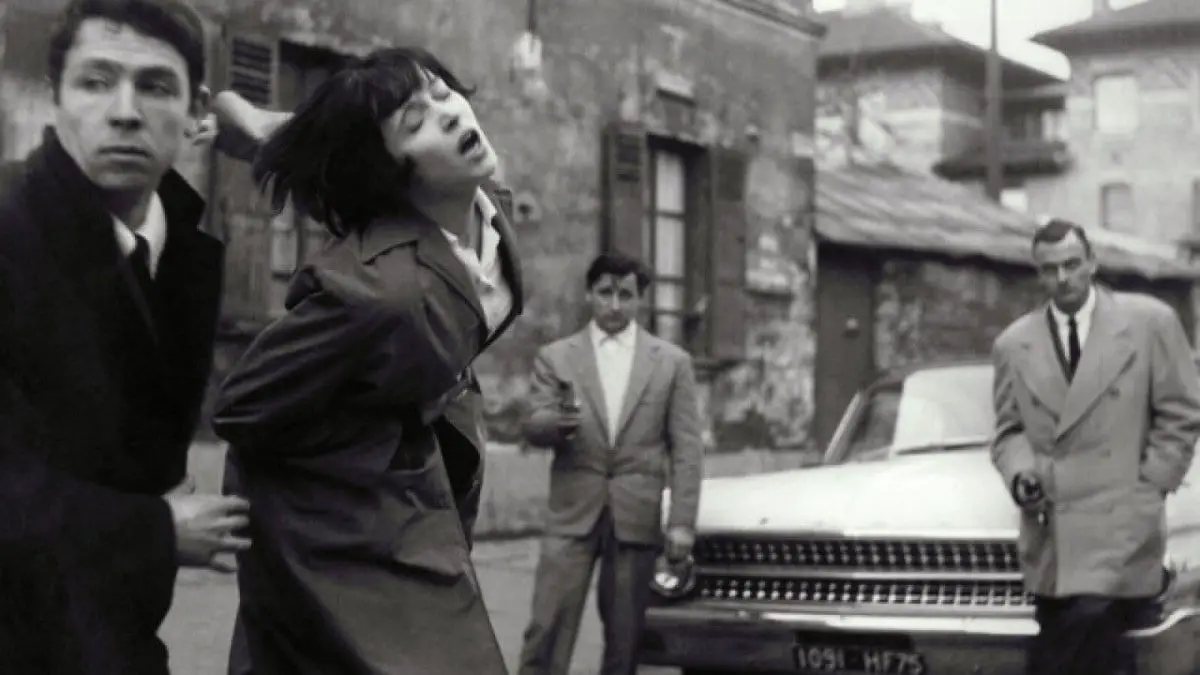
Jean-Luc Godard was one of the movement’s most influential figures; his method of filmmaking, often used to shock and awe audiences out of passivity, was abnormally bold and direct. Similar to Grand Guignol, the protagonist in New Wave films were often marginalized, young anti-heroes, and alienated loners, behaving spontaneously, and often acting immorally and in an anti-authoritarian fashion.
In a 1961 interview, Truffaut said that “the ‘New Wave’ is neither a movement, nor a school, nor a group, it’s a quality.” This echoes attempts to define New French Extremity. It’s hard to itemise what constitutes a New French Extremism film but you definitely know it when you see it. New Wave “auteur theory” stated that film should be a product of the director’s absolute imaginative and inspired aesthetic vision, a characteristic shared by New French Extremity. Often necessarily low-budget, like the New Wave, the films have a trademark directorial stamp upon them. It’s telling that New French Extremity directors who have tried to make films within the Hollywood system have mostly turned out pallid diluted versions of their previous work, largely because they have not been able to retain that auteuristic level of control over the film.
Mise en Abyme
“The films of New French Extremity are startling, unforgettable, troubling, and deeply French. They are not violent films but rather films about violence and its larger impact on the world.” [2]
Having set out a case that New French Extremity isn’t just a lone movement showing awful things on-screen for the sake of it, but is in fact just the latest iteration of French artistic reactions to violence and oppression in the world around them and confronting the audience with those realities, where does that leave us in defining it as a genre, and which films belong in its embrace?
One of the problems lies in that New French Extremity has evolved as it has grown. It has its roots in arthouse sex and violence but gradually came to include more of the horror genre’s tropes, until it has largely become synonymous with French horror in the minds of many Westerners. However, early films considered part of the movement were far more focused on body horror, physical violence, psychosis and sexual violence, with a more gritty, realist aesthetic than later, more polished efforts that borrow from the horror genre.
Whilst Quandt saw these early films as a decline in the quality of film art in France and a needless vogue for shock tactics, what unites them is a message about the ugliness of modern society, and the realities of existence in modern-day France. The shock tactics employed are utilised to break through to the viewer and challenge their complacency. Generally agreed upon as among the earliest examples of the genre are Gaspar Noe’s I Stand Alone (Seul Contre Tous, 1998) and Catherine Breillat’s Romance (1999).
I Stand Alone, Noe’s first feature-length film and a sequel of sorts to his earlier short Carne (1991), sees his anti-hero The Butcher, who having endured (according to him) a life of abandonment, betrayal, failure, and disappointment has become a black hole of disgust and hatred for everyone around him, blaming the world for all his problems. Following an argument with his heavily pregnant girlfriend, he repeatedly punches her in the stomach, then flees back to Paris. Whilst plotting to kill people who have wronged him, he takes his autistic daughter from the institution in which he had her placed in Carne. At this point, a title card flashes up warning the viewer that the audience has 30 seconds to leave the theatre before something shocking happens. The film’s ending shows The Butcher molesting his daughter, and fantasising about killing her, or possibly actually killing her.
The Butcher is Noe’s embodiment of the far-right hatred and bigotry that he saw in a France divided by racial tension and growing support for the Front National. The warning at the end is a deliberate provocation to the viewer, perhaps challenging their desire to watch such unpleasant scenes.

Noe followed this in 2002 with Irreversible, a highly contentious film that continued his themes of sexual violence, and his own personal Theatre of Cruelty. Most of the media discussion focused on the lengthy rape scene which Noe deliberately made as uncomfortable to watch as possible using a single camera angle in one take. Often condemned as excessive and unnecessary, this view seems to miss the point that Noe is trying to make.
As Matt Smith says: “The rape itself is horrific because rape is supposed to be horrific. The lingering camera and total lack of turning away from the moment is a commentary on the sexualization of rape scenes in cinema, not just in revenge films, but across all genre boundaries.” [3]
This unyielding focus is one of the most common identifying factors of New French Extremity. The director doesn’t flinch when it comes to showing you uncomfortable images, and in fact extends that discomfort, revels in it, until you the viewer are forced to question why you are watching it and whether you should be. This is particularly uncomfortable in the case of films with extreme sexual violence like Irreversible and Baise-moi (2000); you want to stop watching, look away, but in a way the director is challenging you. Violent horrible things happen every day and we tend to look away then also. The sexual violence in some of the New French Extremity films also reflect and bring into harsh focus an often-ignored part of modern urban French life in contemporary French cinema. There has been a steady rise in rape culture in the “banlieues”: low-income housing projects in suburban areas of large cities. New French Extremity focuses the camera on the violence we do to others, to ourselves, and forces us to watch, to sit with ourselves. It doesn’t look away for us, it makes us decide whether we should.
“A lot of people really don’t want to see two North African women who have been raped, taking up arms and shooting European men. That’s a little too close to historical reality.” [4]
Where Noe focused on social tension, the hatred of the other and the violence which that breeds, Catherine Breillat’s Romance focuses on feminine sexuality and desire, the female body, and society’s expectations of women as sexual beings and mothers. Marie’s boyfriend has lost interest in having sex with her, whilst claiming to still love her. She seeks fulfilment of her sexual desire elsewhere in a series of graphic unsimulated sexual encounters, which do little but drive her deeper into her personal hell. Romance fits well into the manifesto of New French Extremity with its use of shocking sexual imagery to challenge the audience’s perceptions on love and sexual relationships, particularly the simplistic and unrealistic type usually displayed in films. As is common in early examples of the genre, it’s not an easy watch, with Breillat going out of her way to present a pessimistic view of sexual relationships. Her manifesto is laid out towards the end of the film in a dream sequence which shows women divided by a wall, from the waist up in a delivery room attended by doctors, on the other side, merely glory-holes in a brothel.
There is a debate in itself as to whether films such as I Stand Alone and Romance really belong in the horror genre, and personally I’d say that they don’t on their own, but they are vital stepping stones to understand how the arthouse confrontation and exploitation films at the beginning of the New French Extremity movement led into body horror, and finally to the visceral more gory horror of High Tension, Martyrs, and Inside.
“New French Extremity is a movement that sees art-house and genre directors converge to meditate on the most horrific aspects of life and what remains after those social veneers are stripped away.” [5]
In his book, Brutal Intimacy, Tim Palmer suggested another term: “cinéma du corps” (cinema of the body), which defines a subset of New French Extremity films, and that most have at least elements of. He talks of “a cinema profoundly centered on the body, dwelling on the visceral aspects of corporeal acts, from body crimes to self-mutilations, often savage behaviors derived from unchecked sexual and carnal desires.” [6]
Romance, Trouble Every Day (2001), and In My Skin (Dans ma peau, 2002) are all examples of this cinéma du corps. Trouble Every Day focuses on the inherent violence of sex, and our fears of sexual passion releasing a more primitive force; in this film, it is sexual excitement that drives the characters to uncontrollable cannibalistic violence. Where Trouble Every Day shocks due to its sheer delight in displaying sex and violence together, In My Skin revels in the squeamishness we feel when confronted with wounds, and deliberate self-harm. Both probe deeper than their surface violence, however, providing commentary on modern society. There’s a polarity to the two films though. One teasing out our fears about losing control of ourselves due to the animalistic nature of sex, and the other showing how we have no control over our lives in modern society except what we do to our own bodies.

In My Skin shows a young woman, Esther, seeking a promotion at her marketing company, who becomes slowly obsessed with cutting her body, and eating her own flesh. As she advances at work, and her stress increases, she withdraws from society and seeks control by harming and consuming her skin and flesh. Whilst horrific to the viewer, Esther’s actions to her own body have the sense of an act of love, defying society’s drive to own her.
“The world of the film conspires, in what seems to be an increasingly literal way, to take her body away from her even as she works with increasing fervor to reassert her own agency. With the meticulous violence she performs upon her own body, she enacts the film’s thought that capitalism turns us into the very instruments by which it enacts its violence upon us.” [7]
Abandon All Hope: The New Wave of Horror
While Quandt regarded New French Extremity as an arthouse movement, which in 2004 it certainly more closely resembled, High Tension (Haute Tension, 2003) was probably the first film that really fused the movement with modern horror tropes, nodding to and twisting genre conventions, while maintaining the violent transgressive nature of New French Extremity. While earlier films such as Trouble Every Day and In My Skin (borrowing inspiration directly from Cronenberg’s Crash) utilised some aspects of modern horror films, Aja took the slasher film and injected it with the extreme unremitting violence and cerebrality of New French Extremity, creating a hybrid that was to bring the movement to the world’s attention, and to a large extent determine its direction going forward.

“The philosopher Thomas Hobbes tells us life can be ‘poor, nasty, brutish and short.’ So is this movie.” So begins Roger Ebert’s review of High Tension, a one-star dismissal so erroneous in its opinion that one has to wonder if the man was having an off day, as he seems to completely miss the point even when he falls over it several times throughout the review.
Haute Tension, inexplicably released as Switchblade Romance in the UK, but surviving uncut and undubbed, was released as High Tension in the USA two years later, having been re-edited to remove some of the violence to get an R rating, and horribly dubbed into English. This is the version Ebert saw, which can’t have helped the bad experience he had, but doesn’t excuse the lack of insight he displays.
On the surface, High Tension is a slasher film. Marie and Alex are two college students who drive to Alex’s family’s country house to visit and study for the weekend. As they’re on the way we cut to our introduction to Le Tueur (Killer), the obligatory hulking madman, as he sits in his noisy old truck fellating himself with a decapitated head. The girls arrive at the farmhouse, chat a while and settle in for the night. Alex begins to masturbate, and as she does, we see the approach of the Killer’s truck towards the farmhouse. The Killer rampages through the house, slaughtering the family and capturing Alex, while Marie avoids him and tracks him hoping to save Alex. The twist comes when it is revealed that Marie has manifested La Tueur in her mind and is, in fact, responsible for killing Alex’s family and capturing her. It’s not overtly stated but seems likely that Marie, in love with Alex, has suffered a mental break and killed her family in order to destroy anything that may keep them apart.
Throughout the film, we’re confronted with deliberate use of horror tropes to lead the viewer into feeling at home, of knowing what to expect, then flipping the expectations by revealing Marie to be the killer, and not the “final girl” we were expecting her to be, and also, making us question the reliability of the whole narrative.
Alexandra West states that: “The audience is fooled by its own preconceptions of horror. Because of this they are absorbed in Marie’s reality, which becomes their own until the film’s final moments. The horror of High Tension is not necessarily based in its depictions of violence, but in the knowledge that a psyche can be subsumed and overtaken by another.” [8]
Ebert and many others seemed to miss this deliberate use of the audiences comfort with genre patterns to lead them into believing what they were seeing. Ebert et al complain of plot holes as a result of the twist that makes the film a farce, whilst ignoring the fairly obvious fact that the events of the film are being told from the point of view of Marie’s fractured reality. As West says: “In order to make sense of the film, the audience must try to understand a schizophrenic mind because, logically, the events of the film could not have occurred in the way the audience has seen them.” [9]
High Tension opened the door to what some called a new wave of horror in France, combining the fundamentals of New French Extremity with horror imagery, moving away from the arthouse focus on sex and violence with minimal plot. Films such as Calvaire (2004), Sheitan (2006) and Frontier(s) (2007) dug into national unease and paranoia over the growing divide between rural and urban France; a perceived lack of morals in French youth; rising tensions and unrest in the immigrant communities in Paris suburbs; and a growth in far-right sentiment fuelled by fear and ignorance. Whilst ostensibly horror, these films all continue the New French Extremity penchant for unearthing those things in society and ourselves that disturb and amplifying those anxieties.
Two films released in 2007 confirmed that something was definitely happening in the world of French horror. Commenting on the so-called New Wave of French horror, Matt Smith called one of them, Julien Maury and Alexandre Bustillo’s Inside: “the most assuredly gory, transgressive and outright frightening of the bunch.” Particular to the horror of New French Extremity, these films “provide one of the most comprehensive snapshots of human anxieties about our bodies and modern life…” [10]
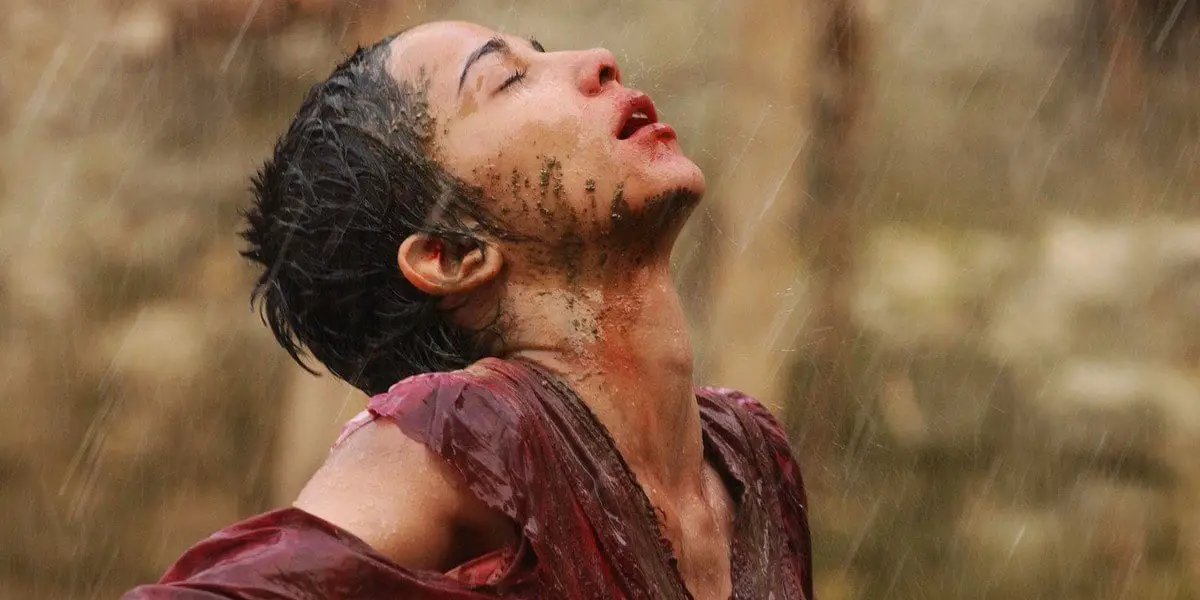
Smith remarks on the commonalities these films have, most notably home invasions, and fear of the Other. As ever, the films are not just intended to shock though, delivering a social message that comes across as twee and contrived in American efforts like Saw (2004). Xavier Gen’s Frontier(s) begins with footage of the 2005 Paris riots which were fuelled by the antagonism of Sarkozy’s right-wing rhetoric and strong-armed police action and immigrant communities who felt targeted and mistreated. At the same time, the fears of the Other in the French public were being stoked by Le Pen’s Front National.
The film echoes these real-life fears, with a far-right candidate being elected as President, and riots breaking out. A gang of Arab Muslim youths use the chaos to commit a robbery but one is shot and the group splits, half to the hospital and half fleeing Paris ending up taking refuge at an inn near the border. The inn turns out to be run by neo-Nazis, and Texas Chainsaw Massacre-like carnage ensues. There’s a lot more to it than this of course, but as is common with the films of the New French Extremity, the critics tend to miss it, focusing only on the violent veneer of the film and the fairly flimsy plots the directors use as a device to explore societal fears. Frontier(s) messages may be a little clumsily delivered, but these are topics largely ignored by the rest of French cinema, commenting on both the current issues of right-wing fears and aggression and division between the classes. West offers a suggestion that many outside France may not consider, but given the distrust of the police going back to the Vichy regime, the presence of a neo-Nazi family living in the French countryside could be taken “as a means of questioning what France’s role was during the Second World War, and what, if any, residuals still remain.” [11]
“In France, you have heavy, strong images in cinema. Here, cinema is considered really as an art and not entertainment…That’s the vision we all have, the directors of horror movies. We don’t want to do popcorn movies. Maybe it’s because we’ve been raised in a culture that tells you to go further with the exploration of your subject. But here the cinema is always clever and if you do an entertaining movie, the critics are merciless.”
― Julien Maury [12]
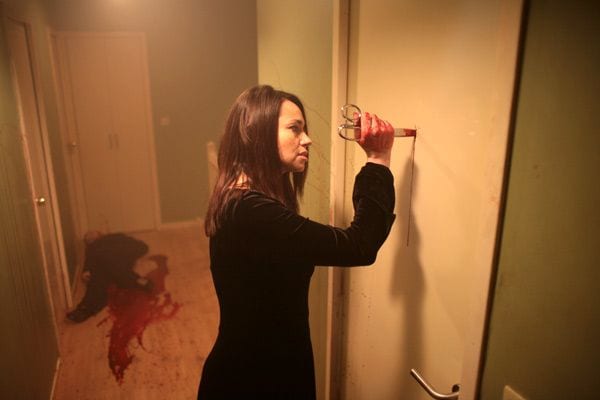
Maury and Bustillo’s Inside is one of the better critically received films of the New French Extremity’s horror wave. Essentially a home invasion film, it adds extra tension by making the woman in peril an expectant mother. At the beginning, Sarah (Alysson Paradis) is involved in a car accident that kills her husband. Four months later, on Christmas Eve, Sarah is due to go into hospital the next day to have her baby. She is disturbed by The Woman (Béatrice Dalle) ringing the doorbell asking to use her phone. Refused, The Woman reveals she knows Sarah’s name and that her husband is dead. The police are called, and visit, but find nothing. The Woman finds a way in and it becomes clear that her intention is to take Sarah’s baby for herself. Along the way, there are various innocent casualties, including Sarah’s boss, her mother, and several police. The twist, when it comes, is that The Woman was the other party in the accident and lost her own baby as a result, thus in her grief-driven psychosis, considers it only fair she has away with Sarah’s instead.
Home invasion is a fear that can hit home with most people, but a woman alone being threatened by a man is a fairly tired and easy trope. Adding in the vulnerability of a pregnant woman, which most films would shy away from and making the antagonist another woman, adds a new dimension to a familiar sub-genre. It being New French Extremity, of course, we have the added horror of the woman wanted to literally cut Sarah open to take her baby. As well as trying to avoid overworked tropes, Inside just looks and sounds a lot more polished than many of its French stablemates, and relies a lot more on mood and suspense over extreme violence, although there is still plenty of that. Of the films look, Maury said: “Since the beginning, we decided to do a good-looking movie. We always wanted to show the worst thing you can imagine, but in the best way possible. We wanted to begin in a very realistic way and then, step by step, go to fantastic imagery, and by the end, we wanted the movie to look like a dark fairy tale.” [13]
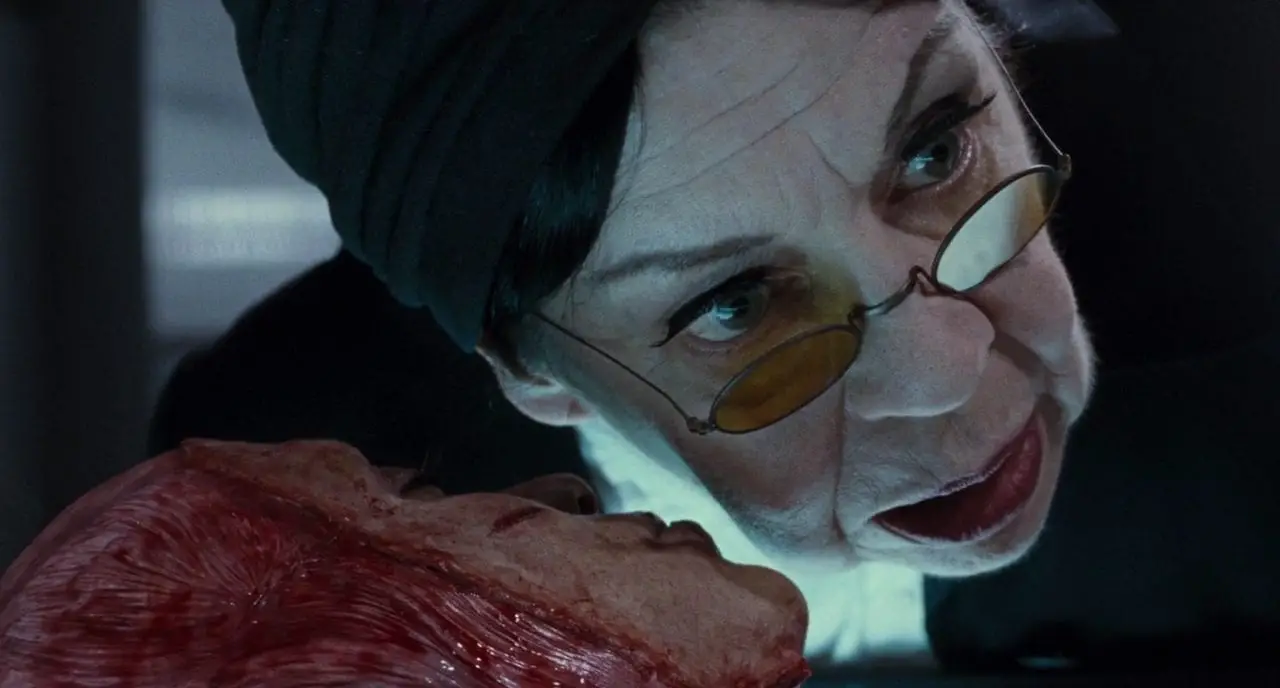
“The film is a personal reaction to the darkness of our world. And I like the paradox within horror film: take the worst of the human condition and transform it into art, into beauty. It’s the only genre that offers this kind of dialectic and I have always found this idea very moving – to create emotion with the saddest, most depressing things in existence.”
― Pascal Laugier [14]
Polarising critics on its release, Pascal Laugier’s Martyrs (2008) is probably one of the more famous of the New French Extremity’s recent horror wave. Lumped in with torture porn films like the Hostel series and A Serbian Film, many critics dismissed it despite its obviously differing approach, not least the absence of sex and sexual violence. Laugier has notably denounced the notion that his film was part of a new wave of French horror, and that the point of Martyrs is not torture. He says: “The film deals with human pain, the meaning of it, which is something completely different.” [15]
Ostensibly telling the story of Lucie and Anna, who became friends at an orphanage where Lucie was placed after escaping years of imprisonment and abuse, Lucie is haunted and terrorized by an emaciated scarred woman that apparently only she can see. 15 years later Lucie rampages through a family home killing everyone in it, having determined the parents were the ones responsible for her abuse. Anna arrives, horrified at Lucie’s actions. The scarred woman reappears to torment Lucie, but Anna can only see Lucie attacking herself. It is revealed that the woman is a manifestation of Lucie’s guilt at leaving her behind to endure further torture when Lucie escaped as a child. Lucie kills herself, perhaps knowing that there is no escape from her torment. Anna discovers a secret area under the house containing an imprisoned and tortured woman and realised that Lucie was right about the family.
It’s at this point that Martyrs diverges its set up of being merely an excessively violent film and ventures into a possibly even more horrific venture looking at the effects of unendurable pain and suffering, and what lies on the other side. The secret society that arrives, capture and tortures Anna have been trying to discover secrets of the world beyond this one by inflicting so much pain on people that they achieve transcendence. Lucie was a failed experiment, as have been all the others. After being tortured for a while, then flayed alive, Anna achieves a state of transcendence, and when the leader, Mademoiselle arrives, Anna whispers in her ear. Mademoiselle asks her assistant if they can imagine what comes after death, and when the assistant replies, “No”, she says, “Keep doubting,” before shooting herself.
As with other films in the New French Extremity, Martyrs uses displays of extreme violence in a way to force the viewer into a state of shock, while also delivering a message. Unlike American extreme horror and torture porn, the objective is to shock, not to titillate, and the director has a real purpose behind the use of violence, whether its delivery is to your taste or not. In the film, Laugier displays the definition of martyr as “To bear witness”. This isn’t the usual definition people are aware of, but in early Christian texts, the word for martyr is nearly identical to that for witness, someone who gives testimony about something they believe to be true or have seen for themselves. This could be said to be true for Anna and also for us, the viewer, who has suffered through, and identified with Anna’s pain and seen her transcendence. Laugier says: “For me, the martyr represents the one who, having no other choice but to suffer, manages to do something with this pain.” [16]
Following Martyrs, New French Extremity became less cohesive, with French horror afterwards relying more on standard tropes and losing the elements of social commentary that made it a movement rather than merely a point of origin. American remakes—some by directors of the more popular New French Extremity films—and attempts to capture the essence of the movement and its energy have produced films devoid of any of the intelligence and violent excess, aiming for more acceptable fare that doesn’t challenge audiences too much. Needless to say, these films are much the worse for the dilution in both extremity and social commentary.
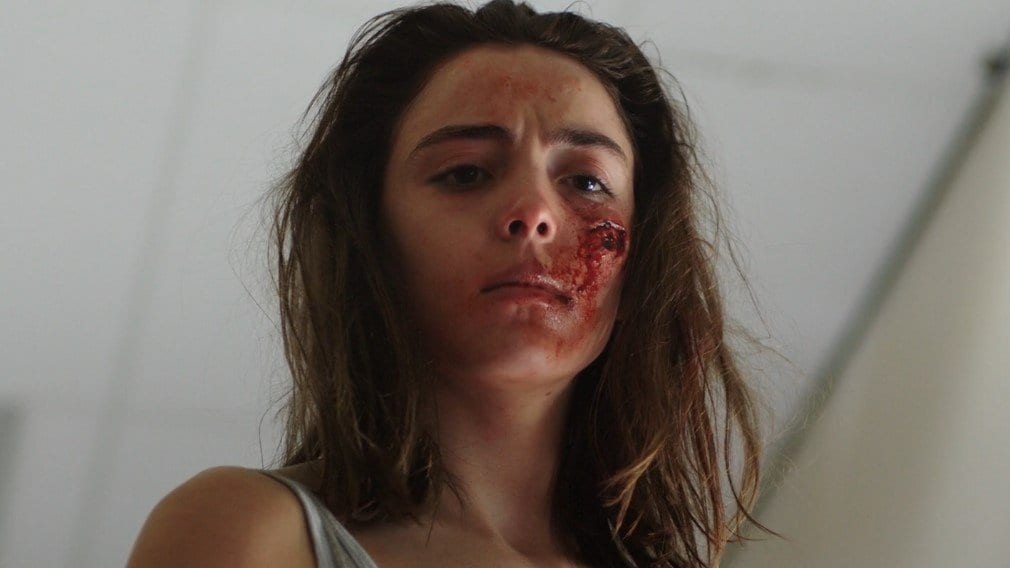
Does that mean New French Extremity has run its course then? A recent release, Raw, originally released as Grave in France in 2016, displays hope of a resurgence and garnered enough critical acclaim—despite its violence—that Netflix picked it up. Despite dealing with such New French Extremity themes as cannibalism and body horror, Raw has received almost universal acclaim, and film critic Mark Kermode named Raw the best film of 2017. Reviving the—by now probably desirable—“trophy” of causing viewers to faint in the cinema, Raw follows a young vegan girl at veterinary school forced to eat raw kidneys as part of a hazing ritual. Following this, she develops a rash and irresistible cravings for meat. Things inevitably escalate, but whilst the film features undeniably distasteful scenes, its violence is a lot smarter and more measured than many of the films previously discussed here. It feels perhaps then like a somewhat more developed, grown-up New French Extremity. Still able to shock, still able to make a few people faint, but using its bag of tricks with a lighter hand. The director, Julia Ducournau, achieves one of the elusive goals of many New French Extremity films of making us feel empathy for a character who is essentially a monster. There is also the unremitting focus on the uncomfortable. As Emily Laird says: “The violence is shocking but Ducournau treats it with such an unyielding gaze with her camera…it really forces you to examine it both visually and psychologically…to look in the most disturbing and voyeuristic way.” [17]
“You have this feeling when you bite someone’s arm for fun, that you want to go a bit further, but you don’t because you have a moral canvas. This thing is in us, we just don’t want to see it. So I thought, since my characters always feel like monsters deep inside, I wanted the audience to feel like a monster as well, and to understand what she’s doing. Because we are all monsters, really.”
― Julia Ducournau [18]
From early arthouse exploitation through to the extreme horror of its later phase, New French Extremity has perhaps relied a little too much on the desire to shock, with less attention on whether their message and themes are delivered well, or even understood. There are notable exemptions which achieve a greater balance, some of which I’ve covered here. Raw shows that it is possible to combine extreme imagery, plot, social commentary and a high level of production value even on a small budget. Rather than mourning the death of a genre, we may be looking at the just the beginning of a new chapter in New French Extremity.
I have only touched upon a few films that are considered part of New French Extremity, those that for me seem to illustrate most keenly the evolution of the movement, those that are my personal favourites, or—even when I didn’t actually enjoy watching them—those that most exemplify the central tenets of New French Extremity. There is plenty more to explore, and for a more thorough reading of the subject, I would point you in the direction of Alexandra West’s seminal work on the subject: Films of the New French Extremity: Visceral Horror and National Identity.
[1] Quandt J., Flesh and Blood: Sex and Violence in Recent French Cinema. February 2004: ArtForum.
[2] West, Alexandra. Films of the New French Extremity: Visceral Horror and National Identity. McFarland & Company, Inc.
[3] Smith, Matt. Confronting Mortality: “The New French Extremity”, The Hostel Series and Outdated Terminology.
[4] Alix Sharkey, Scandale!: The Story Behind Baise-moi. The Guardian (April 14, 2002).
[5] West, Alexandra. Films of the New French Extremity: Visceral Horror and National Identity. McFarland & Company, Inc.
[6] Tim Palmer (2011) Brutal Intimacy: Analyzing Contemporary French Cinema. Middletown, CT: Wesleyan University Press.
[7] Pyke, Jim. 5 Reasons Why You Should Be Watching New French Extremity Films.
[8] West, Alexandra. Films of the New French Extremity: Visceral Horror and National Identity. McFarland & Company, Inc.
[9] Ibid.
[10] Smith, Matt. “Confronting Mortality: ‘The New French Extremity’, The Hostel Series and Outdated Terminology.”
[11] West, Alexandra. Films of the New French Extremity: Visceral Horror and National Identity. McFarland & Company, Inc.
[12] Totaro, Donato. “A l’intérieur: a Rebirth of French Horror”
[13] Stuart F. Andrews, “Enfants Terribles”, Rue Morgue 78 (May 2008), 16–21.
[14] Sélavy, Virginie. “Martyrs: Interview with Pascal Laugier”. Electric Sheep Magazine (May 2009).
[15] Turek, Ryan. “Exclusive Interview: Martyrs Director Pascal Laugier“. Comingsoon.net
[16] Sélavy, Virginie. “Martyrs: Interview with Pascal Laugier”. Electric Sheep Magazine (May 2009).
[17] Laird, Emily. Raw and the New French Extremity Movement. Medium.
[18] Godfrey, Alex. “Raw director Julia Ducournau: ‘Cannibalism is part of humanity.'” The Guardian. 30 Mar 2017.


